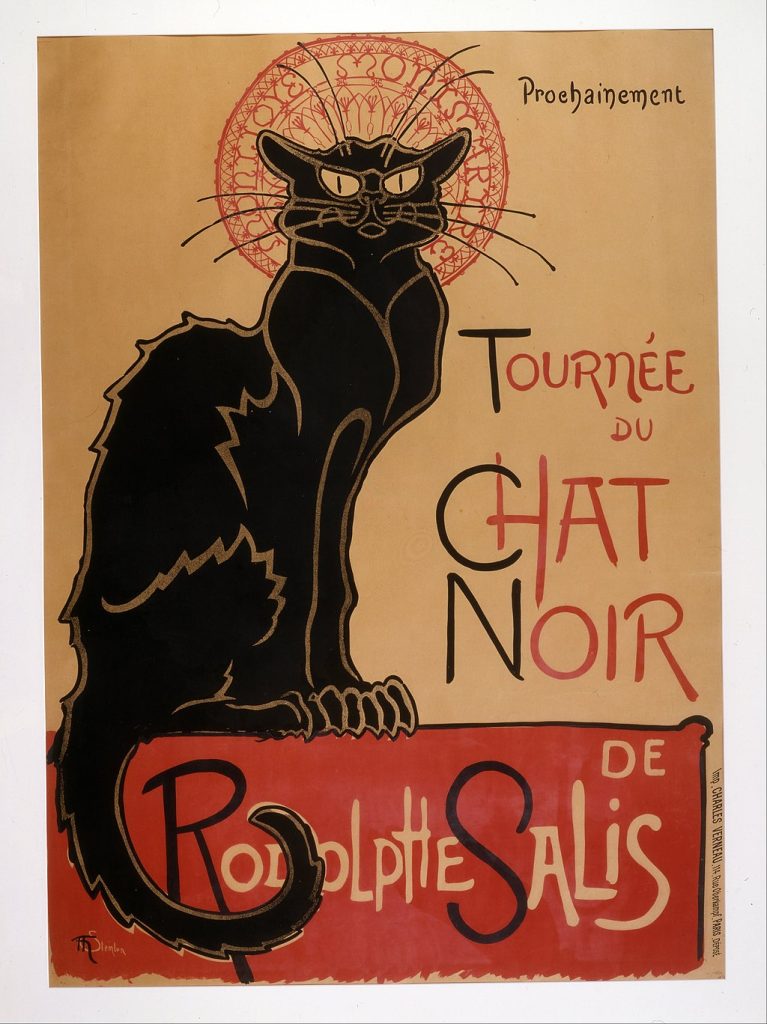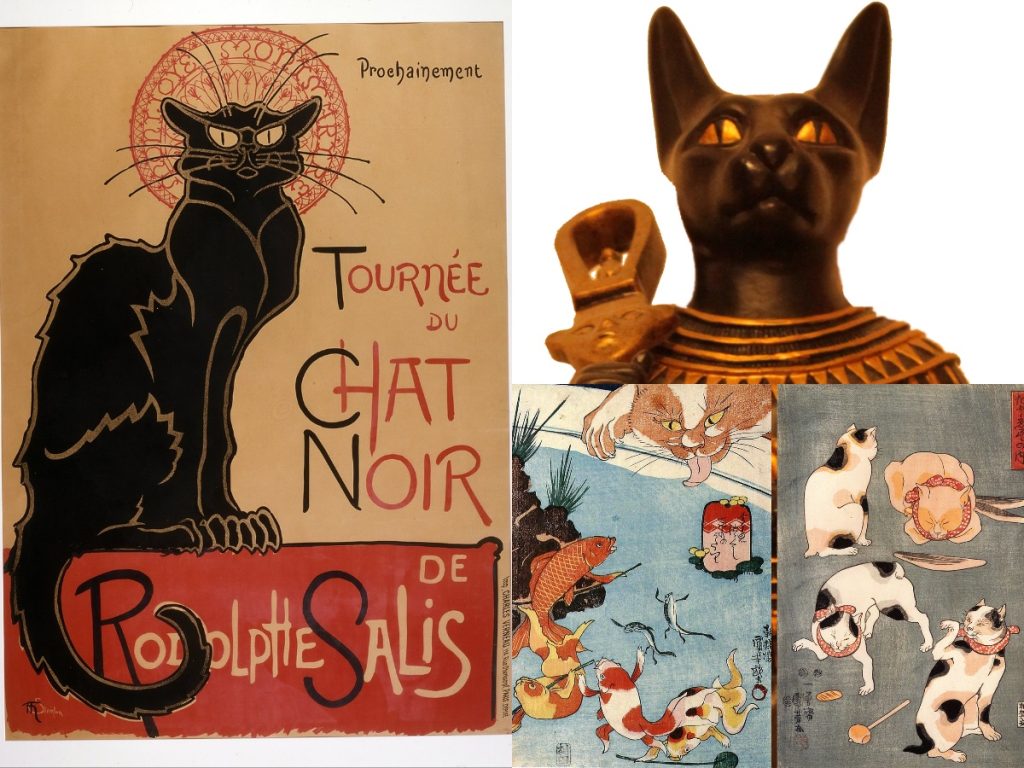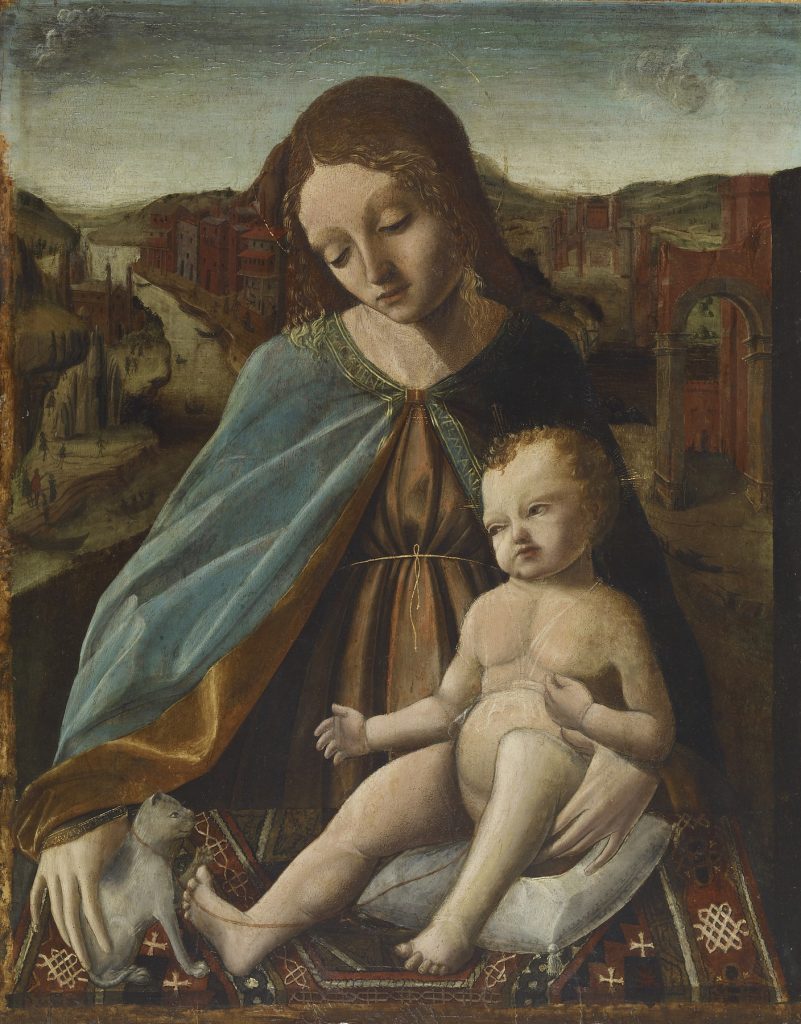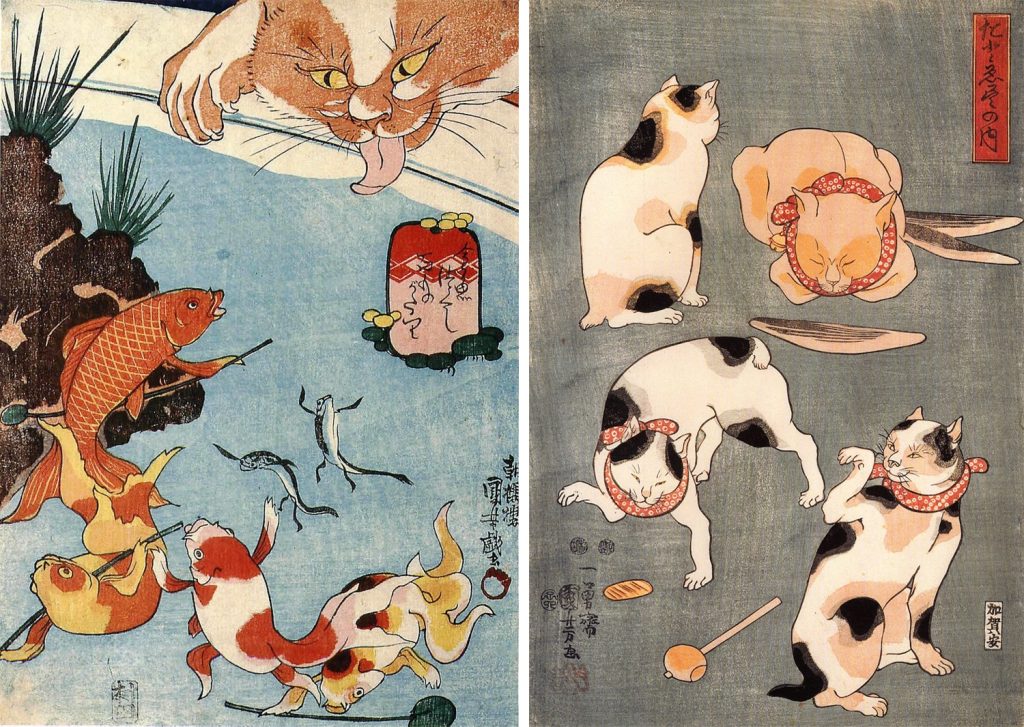Cats have had a significant presence in the world of art history, appearing in various forms and contexts throughout different periods. Here are a few interesting points about cats in art history:
- Ancient Egypt: Cats held a special place in ancient Egyptian culture and mythology. They were highly revered and considered sacred animals. They frequently appeared in Egyptian art, such as wall paintings, sculptures, and amulets. The most famous Egyptian cat figure is the goddess Bastet, who was often depicted with the head of a lioness or a domestic cat.

Statue of Bastet, in her hands she holds the Sitsrum
Courtesy: Wiki - Medieval and Renaissance Art: Cats were often depicted in religious artworks during the medieval and Renaissance periods. They were sometimes associated with femininity and sensuality. For example, cats were occasionally included in the background of paintings of the Virgin Mary or portrayed alongside female figures.
- Japanese Ukiyo-e Prints: Cats were a popular subject in Japanese Ukiyo-e prints during the Edo period (17th to 19th centuries). Artists like Utagawa Kuniyoshi and Utagawa Hiroshige depicted cats in various scenes, often capturing their playful or mischievous nature.
- Modern and Contemporary Art: Cats have continued to inspire artists in more recent times. Famous artists like Henriette Ronner-Knip, Théophile Steinlen, and Balthus have created notable cat-themed artworks. Furthermore, cats have become popular subjects in internet culture, with many artists and illustrators creating cat-related content for digital platforms.

Théophile- Alexandre Steinlen – Tournée du Chat Noir de Rodolphe Salis (Tour of Rodolphe Salis’ Chat Noir)
Courtesy: Wikipedia - Symbolism and Meanings: Cats in art can carry different symbolic meanings. They have been associated with traits like independence, mystery, and sensuality. Cats can also symbolize domesticity and companionship. The interpretation of cats in art can vary depending on the artist’s intention and the cultural context in which the artwork was created.
Overall, cats have left their paw prints in the world of art history, appearing in a range of artistic styles and cultural contexts. They have been portrayed as sacred beings, domestic companions, playful creatures, and symbols of various traits and emotions. Their enduring presence in art reflects the enduring fascination and admiration humans have had for these enigmatic animals.
To know more check Google arts & culture here

Iftikar Ahmed is a New Delhi-based art writer & researcher.







